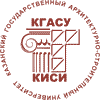About the authors
| First name, Middle name, Last name, Scientific degree, Scientific rank, Current position. Full and brief name of the organization, The organization address. | Ilshat T. Mirsayapov, Doctor of Technical Sciences, Associate Professor, Head of the Department of Reinforced Concrete and Stone Structures; Kazan State University of Architecture and Engineering, Kazan, Russian Federation. Email: This e-mail address is being protected from spambots. You need JavaScript enabled to view it Vladimir A. Lim, post-graduate student, engineer of the 2nd category, Kazan Giproniiaviaprom named after B.I. Tikhomirov, Kazan, Russian Federation. Email: This e-mail address is being protected from spambots. You need JavaScript enabled to view it Arslan I. Mirsayapov, post-graduate student, engineer of the 2nd category, Kazan Giproniiaviaprom named after B.I. Tikhomirov, Kazan, Russian Federation. Email: This e-mail address is being protected from spambots. You need JavaScript enabled to view it Alfred M. Suleymanov, doctor of technical sciences, professor, Kazan State University of Architecture and Engineering, Kazan, Russian Federation Email: This e-mail address is being protected from spambots. You need JavaScript enabled to view it |
| Title of the article | Evaluation of the effectiveness of the use of high-modulus polymer composite reinforcement |
| Abstract. | The interest of the enterprises of the construction industry in products made of polymer composite materials is growing every year. Along with the well-known advantages of polymer composite reinforcement, there are disadvantages that prevent its use in large-scale construction. The most characteristic disadvantage is the low modulus of elasticity compared to steel. This imperfection can be eliminated by using high-modulus polymer composite reinforcement in the structures. The purpose of the work is to evaluate the effectiveness of the use of high-modulus polymer composite reinforcement in bending elements. The objectives of the study are to assess the strength in normal sections of bent concrete beams reinforced with high-modulus polymer composite reinforcement, as well as to compare the bearing capacity of concrete beams reinforced with steel, low-modulus and high-modulus polymer composite reinforcement. Results. The paper proposes a comparative assessment of the increase in the ability of bending concrete beams in normal sections, reinforced with high-modulus polymer composite reinforcement, steel reinforcement and low-modulus polymer composite reinforcement. Conclusions. The significance of results obtained for the construction industry lies in the fact that the use of high-modulus polymer reinforcement increases the load-bearing capacity of concrete bending elements, while having a significant high elasticity compared to steel. |
| Keywords. | non-metallic reinforcement, high-modulus polymer composite reinforcement, strength of normal cross-sections, concrete structures, bendable elements |
| For citations: | Mirsayapov Ilshat T., Lim V.A., Mirsayapov A.I. , Suleymanov A.M. Evaluation of the effectiveness of the use of high-modulus polymer composite reinforcement // News KSUAE, 2023, № 3(65), p.145-153, DOI: 10.52409/20731523_2023_3_145, EDN: KGTHOV |
















